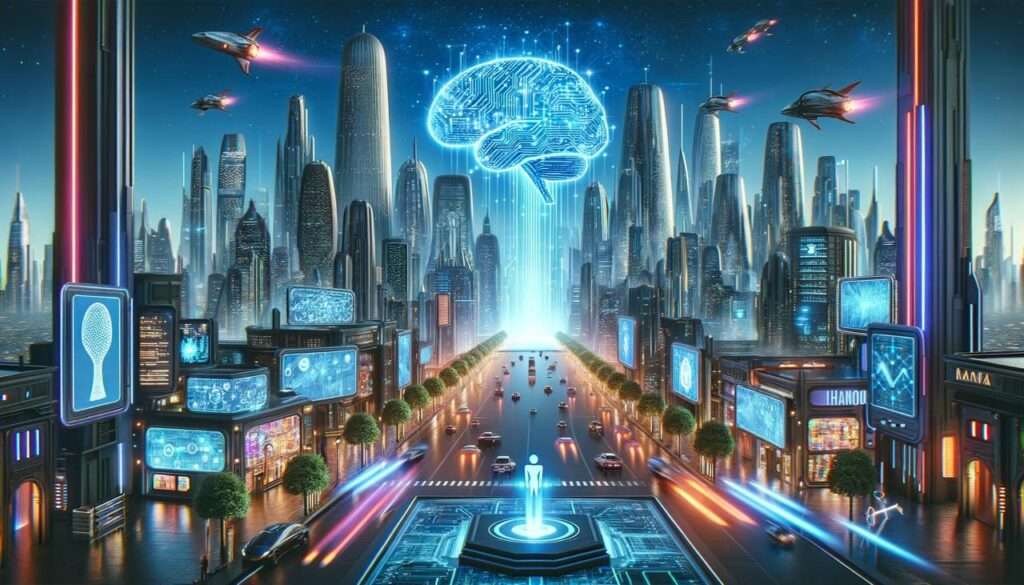
AI in Education: Unlocking the Future of Learning
Introduction
In the rapidly evolving landscape of education, Artificial Intelligence (AI) is poised to be the game-changer. From personalized learning to improved accessibility, the integration of AI in teaching methods holds promises and challenges that demand exploration.
Teaching Methods with AI
1. Personalized Learning: Imagine education tailored to each student’s pace and style, acting as a personal coach. AI, akin to a trusted guide, adapts the curriculum, providing additional support through visual aids or interactive examples, making subjects like algebra more accessible. 📊
2. Virtual and Augmented Reality: The infusion of Virtual Reality (VR) and Augmented Reality (AR) can turn learning into an immersive experience. History lessons become virtual journeys, where students explore the Indus Valley Civilization firsthand. 🌍
Learning Outcomes with AI

1. Improved Accessibility: AI becomes the beacon of democratized education, transcending geographical barriers. Rural students, akin to cinema enthusiasts discussing a blockbuster, access world-class resources, transforming education in places like Maharashtra. 🌐
2. Skills Development: Focusing on practical skills, AI aligns education with industry needs, much like a well-run e-commerce operation. It fosters a job-oriented approach, preparing students for the demands of the workforce. 🛍
Student Engagement through AI
1. Gamification: Education transforms into a captivating experience, likened to a T20 cricket match. AI introduces game-like elements, making learning interactive and fun, ensuring students stay engaged. 🎮
2. Instant Feedback: In the spirit of instant replays in cricket, AI offers immediate feedback. Students understand their mistakes in real-time, enhancing the learning process. ⏱️
Streamlining Administrative Processes with AI
1. Automated Operations: AI streamlines administrative tasks, freeing educators to focus on teaching. Imagine a well-managed startup where operations, from admissions to grading, run seamlessly. 📝
2. Data-Driven Decisions: Big data analytics guides curriculum development and policy decisions, ensuring effectiveness and student-centricity. The educational journey becomes as precise as a well-calibrated compass. 📊
Potential Positive Implications of AI in Education
1. Bridging the Urban-Rural Divide: AI becomes a catalyst, making quality education accessible in rural areas. It empowers students who would otherwise be left behind, bridging the gap between urban and rural learning experiences. 🌉
2. Enhanced Job Readiness: Aligning education with market needs, AI better prepares students for employment. This aspect is particularly crucial for initiatives like Skill Sync Solution, ensuring graduates are job-ready. 💼
Potential Negative Implications to Consider
1. Digital Divide: While AI brings opportunities, a potential digital divide may emerge, leaving students in underprivileged areas without access to AI tools. It’s a challenge that requires attention and solutions. 🌐➗
2. Overdependence on Technology: Balancing the scale, there’s a concern of overdependence on AI hindering critical thinking and problem-solving skills. Striking the right balance is essential for holistic education. 🤖
Considerations for Educators and Institutions
1. Continuous Learning: Educators need to continually update their skills to keep up with AI advancements. The learning journey is ongoing, mirroring the dynamic nature of technology. 📚
2. Investment in Tech Infrastructure: Educational institutions must invest significantly in technology to fully harness the benefits of AI. It’s akin to planting seeds for a future where technology and education harmonize. 💰
Monitoring Student Well-Being
AI can monitor student well-being by analyzing behavioral patterns. Identifying signs of stress or disengagement allows for timely interventions, ensuring a holistic approach to education
In Conclusion
The integration of AI and big data in India’s education sector holds the potential to be a game-changer, reminiscent of hitting a crucial six in a match.
However, it’s paramount to ensure that these technologies are accessible to all, fostering an inclusive and equitable educational landscape.
This future isn’t just about technology; it’s about shaping a smarter, more inclusive world for the students of tomorrow. 🌐📚🤖
